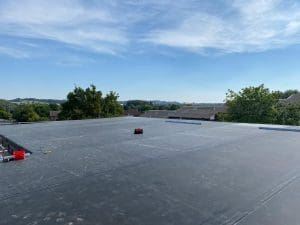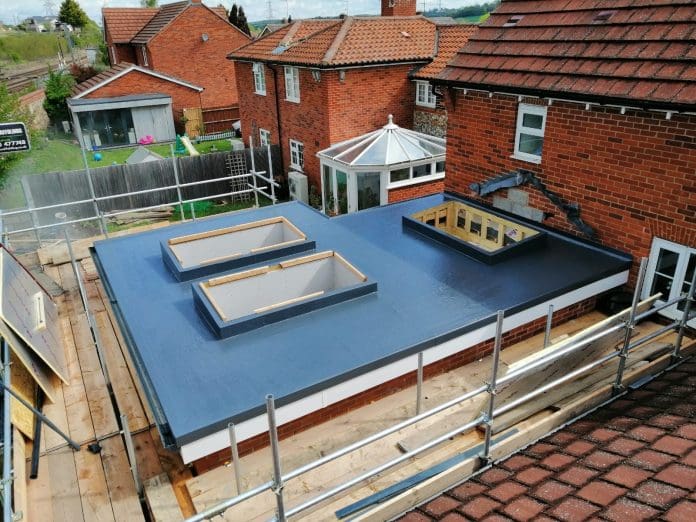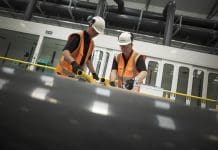Better flat roof systems are key to meeting the UK government’s energy efficiency targets and keeping bills low
The UK aims to achieve an EPC rating of C for as many homes as possible by 2035 and for commercial buildings to reach an EPC rating of B by 2030. Flat roof systems are critical to these objectives.
A poorly insulated roof can lead to up to 25% heat loss, significantly impacting energy efficiency and fuel bills. Sunny Lotay, national commercial manager at PermaRoof Commercial, part of PermaGroup, discusses.
How can heat be lost in flat roof systems?
Any part of a property that is not properly insulated, protected or maintained runs the risk of allowing energy to escape, most notably heat.
Heat can be lost mainly through the walls, floor, windows, doors, and roof.
For flat roofs, there are a few reasons why heat escapes. This includes having no proper insulation or improper installation, using low-quality products without the appropriate waterproof tests, or not having a vapour control layer (VCL) fitted.
Warm roof systems are now compulsory for any residential flat roof, including when a building with a flat roof is used for domestic purposes such as a garage conversion. Where an older property has a flat roof, this may need to be upgraded to meet current regulations.
A warm roof is where the insulation is placed on top of the roof deck, and the roof covering is placed over the insulation. These roofs allow the heat to be conserved within a property without ventilation.

High-level risks of installing inadequate roof insulation
By not installing proper roof insulation and waterproofing systems, property owners could waste a large amount of heat and experience increasing fuel bills as it takes more and more energy to warm the building.
In addition, where there is insufficient or inadequate insulation in the roof, the rising heat will eventually meet the cold part of the roof. This is known as a dew point, and without the right protection, the building will get continuously cooler, and more moisture will also be transmitted.
This moisture becomes trapped at the dew point, and in icy weather, it will freeze. Over time, consistent freezing and thawing will impact the roof’s overall quality and could cause other, more complex issues. In a warm roof system, no cold spots are left that could allow condensation to occur.
Moisture trapping is also more likely to happen when the house has insulation in other areas, such as the floor and walls, but not in the roof – excess heat is created that can speed up the condensation process in the roof. It’s essential to look at the building and not assume that insulating one area will do the job.
While historically, property owners, both commercial and domestic, may have opted for quick or temporary fixes or perhaps didn’t even consider roof upgrades, there is now more importance placed on roofs, especially whole systems.
As the UK government works towards carbon net zero ambitions, part of this is enhancing energy efficiency across the board. As well as wanting to help reduce bills, cutting down heat waste directly contributes to lowering carbon emissions – a win-win for all.
The targets placed on EPC ratings encourage system and product upgrades to align with these goals. Flat roof systems must be supported and used correctly to support these goals.
A four-step approach
1. Property owners looking to boost energy savings or make their roofs more efficient must first seek expert roofing advice to ensure the specification is correct and meets relevant compliance requirements and the u-values desired.
It is advised to get a complete roof survey from a reputable company that can analyse all roof elements and point out where there may be serious or small issues that could worsen over time. It is not always possible to see the effects of a poorly installed roof system, but they will be there, and a survey will ensure they are spotted. From there, the right contractor can also be appointed to carry out the work.
2. Insulation is the next area to get right – this includes understanding the right type of insulation needed, how much to use, where it needs to be located and how to install it.
Getting advice on this is also recommended unless you have experience using insulation to ensure it performs correctly and is suitable for your roof. It may be that old insulation needs to be replaced, which professionals can carry out.
Having all these bases covered will mean the insulation will not allow heat escape but should help reduce carbon emissions and costs.
3. However, The right insulation still won’t work without the proper waterproofing. This area is sometimes added on its own, but at PermaRoof, we only complete whole systems as best practice, so waterproofing is included as part of a complete system. The correct waterproofing will ensure no gaps or areas where water can collect and break down the system.
There are now many waterproofing options to suit even the most uneven roof surfaces, including adhesive and liquid systems that make waterproofing much easier. With the unpredictability of British weather, a reliable waterproofing system will ensure your roof retains heat and energy.
4. Lastly, making all these upgrades is only beneficial if maintenance is carried out regularly. This includes clearing and cleaning gutters and valleys to ensure proper drainage.
Standing water will break down waterproofing materials over long periods, so removing debris at least twice a year is essential, particularly after winter. Maintained properly, a roof should have a typical lifespan of 40 years, but failure to keep on top of small issues can lead to more significant problems or complete roof failure.

















